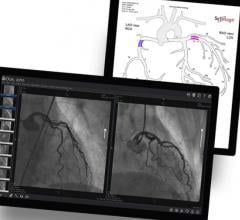
March 11, 2021—Clinical guidelines are regularly updated among all aspects of medicine. Within cardiology, organizations like the American College of Cardiology and the American Heart Association update clinical guidelines almost every year.1 2 However, this poses a problem for clinicians. Manually updating clinical guidelines within outdated cardiovascular information management systems (CVIS) is a difficult and timely process. And while structured reporting is key in today’s cardiology departments, the information included in such reports may not be relevant if it doesn’t reflect the latest clinical guidelines.
Dr. Serge Makowski, CEO and Co-founder of leading clinical software development firm MediReport, says, “Doctors have to be aware of the latest clinical guidelines whenever they treat patients. But manually updating existing information management systems is a tedious, time- and resource-consuming process that usually involves professionals from other fields, such as Information Technology or Research and Development. Systems should have the ability to update automatically to give clinicians access to the latest techniques, newest devices, and most recent recommendations; this enhances the quality of generated reports and patient treatment overall.”
Many hospital systems find it challenging to stay up to date with rapidly evolving cardiology guidelines. In many cases, doctors are already aware of new guidelines and want to integrate them into the existing CVIS platform. But in order to do so, it’s often necessary to speak with the hospital’s IT department. Other entities such as the CVIS account vendor and the hospital’s Research and Development team must be involved to successfully update the guideline. By the time the guidelines are integrated, they may be obsolete. Previously, most users simply wanted a product for the management of their cardiovascular data. Now, users want service in addition to the product. Providing proactive and retroactive updates of clinical practice guidelines and recommendations should be an integrated part of the product. This enables clinicians to save time while adhering to the latest clinical recommendations. It also ensures that payers, such as Medicare, receive all the information needed for full reimbursement.
Modern CVIS Features Improve Adherence to Guidelines
Because cardiology is an innovation and research-driven field, practice guidelines regularly undergo review and updating. When new guidelines are published, CVIS platforms should:
- Integrate new clinical guidelines live and dynamically with no lag time.
- Offer the ability to enter the new requested information or calculations, which helps physicians describe new techniques, include new medical devices in protocols, or follow new clinical recommendations.
- Implement relevant and appropriate new clinical fields at the right time of the procedure description to ensure correct and relevant data is collected.
In Cath labs using CVIS systems that don’t update automatically, loss of data, data becoming obsolete, and recollection of the wrong data are very real risks. For example, in the past, coronary stenoses were traditionally classified as ABC lesion type and other clinical information were aggregated to evaluate risk factor such as age, biomarkers, and clinical history. Today, based on new clinical guidelines, lesions are evaluated using SYNTAX scores, which allows for a more precise and accurate evaluation of the lesion’s severity. The CardioReport 360 system dynamically integrated this new guideline with SYNTAX scores a few years ago and now, in compliance with the most recent guideline, implemented SYNTAX score II. The system also has the ability to recalculate all lesions’ scores from past procedures without losing any data. At the same time, the system’s software is updated so that SYNTAX scores are always used moving forward.
CVIS technologies should also be adaptable to updated procedural techniques, such as bifurcation. Good practice is knowing the latest bifurcation techniques, and the CVIS must implement accurate clinical fields to document different techniques such as T-stenting, crush technique, and Y-stenting. When the DK crush stent first appeared on the market, this new technique became part of protocol for doctors using CardioReport 360. The addition happened almost instantly.
A unified CVIS system must provide continuous integration of the guidelines and classification seamlessly with no lag time or intervention from an organization’s IT department. This helps avoid time lost to development, testing, and installation. Such a centralized system enables the clinician to document all appropriate information, provide care based on the newest evidence-based practice, and generate automatic reports for review by providers and others. When guidelines are updated, they’re automatically modified within the software, preventing documentation errors, and helping providers receive appropriate reimbursement.
CardioReport 360 is the ideal choice for doctors because of:
- Its flexible and dynamic protocol and dictionary
- MediReport clinical support team automatically updates dictionaries, remotely, for all users, as they review the latest medical literature
- Partnerships with medical device manufacturers which allows the system to update their catalogs automatically.
Dr. Makowski says, “A unified CVIS system should counsel the clinician on the mandatory and critical procedural data abiding by the latest clinical guidelines. The platform must integrate the newest information into the system to help improve clinical flow, provide better patient outcomes, and ensure compliance with all rules and regulations.”
Reference:
1. ACC Guidelines & Clinical Documents
2. AHA Guidelines and Statements


 May 15, 2024
May 15, 2024 








